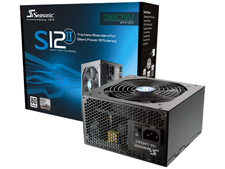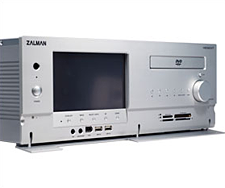Of Mice, Keyboards, and Enclosures
Input devices are one of the more interesting aspects of our roundup as the sheer amount of mice and keyboards available makes it virtually impossible to test every combination. Also, the very subjective nature of testing these devices leads us to always offer the advice of "try before you buy". We decided our best course of action was to select a few of the top selling products and then test their capabilities under Vista. What we found was quite surprising as several of the products proved to us that "Vista Certified" can in fact mean "Vista Disaster".
As an example, for our HTPC platform choice we decided a Bluetooth capable mouse/keyboard combination would offer the best compromise for the sofa users. This led us to the
Microsoft Wireless Entertainment Desktop 7000 and
Logitech Cordless Desktop MX 5000 Laser Combo as our two choices, neither one being anything near inexpensive. What surprised us was the number of issues we had with the Logitech choice. Most of the issues centered on the Logitech having to use the Microsoft Bluetooth stack, but in our opinion there is no way this product should have received the Vista Certified label.
For our standard wireless combinations we selected the
Logitech Cordless Desktop Comfort Laser,
Logitech Cordless Desktop MX 3200 Laser, and the
Microsoft Wireless Optical Desktop 4000. Of course there are multitudes of different wireless keyboards and mice that can be combined together depending upon your likes or dislikes as a user. For simplicity we decided to go the package route - which sometimes works and sometimes doesn't, as we will find out in our separate reviews.
Except for HTPC work, we really prefer the wired keyboards and mice with one of our favorite combinations being the Microsoft
Natural Ergonomic Keyboard 4000 or Microsoft
Comfort Curve Keyboard 2000 paired with the
Logitech MX-518 mouse. We like the MX-518 so much that most of our work desktops use it; it is just that good. As far as our gaming platform is concerned we will test the following keyboards:
Razer Tarantula,
Saitek Eclipse, and of course the
Logitech G15. We will look at
Creative's product lineup later on in the year. Our gaming mice consist of the
Logitech G5,
Razer DeathAdder, and the
Razer Diamondback 3G. Unfortunately, we will have to wait a bit longer before the new Logitech G9 mouse arrives in the labs.
Power supplies are another area where the sheer number of choices and price ranges make it difficult to choose a product. Our thought process in choosing a power supply is to think about the power requirements of your current system and probably the next one or two systems you plan on building. Besides the monitor, the power supply is one of those items that can potentially last through a couple of system builds. We typically tailor our budget to afford the best possible power supply on the market at that time.
Considering our power requirements with the µATX platform are not going to be that great as CrossFire/SLI are out and typically the number of drives and peripherals will be limited by the small form factor, we believe something in the neighborhood of 380W to 480W should be acceptable for now and the near future. We also want a unit that is energy efficient and quiet so our logical choice is the
SeaSonic S12 II 380W. We have not found a combination in our roundup testing yet that would cause us to seek a higher wattage unit. SeaSonic's own S12 II 430W would be the next logical choice but we felt like spending another $25 in this case was not worth it. There are numerous other choices that can made in this sector with Corsair, Enermax, SPI, FSP, and Antec all having good quality power supplies in this range.
We have just about covered the majority of components at this time which leads us to the final stretch. Knowing we are only utilizing the µATX form factor left us with several choices for cases and once again what is one man's garbage is another man's treasure in the hunt for case designs. We typically play it conservative so our choices reflect the decisions made - well almost. For our HTPC platform buildup we decided to break the budget and go with the Zalman
HD160XT. Our gaming platform has two choices, the first being the Thermaltake
LANBOX VF1000 for those who need a solid yet fairly inexpensive portable box. Our second choice and one that broke our budget again is the Silverstone
SG03 SFF tower unit. We felt guilty about the additional credit card charges on our previous case choices so for our general desktop unit we went with the Ultra Products
Micro Fly SX6 case with 600 Watt XVS-Series power supply. Our standard case during the motherboard testing phase was the Silverstone SG03 and we have to admit this is one of our favorite cases at the moment, regardless of form factor.













42 Comments
View All Comments
Calin - Tuesday, August 7, 2007 - link
I can hardly wait for the entire extravaganzalicuo - Tuesday, August 7, 2007 - link
Word up! Really nice! Since i am moving to a new town but will keep going to LAN events this round up will come in handy when making my choices! Anandtech brings a lot of articles that I like to read. I guess i am reading your site since 10 years and i see a constant improvement (some other münich based site didnt improve). Keep it coming guys!